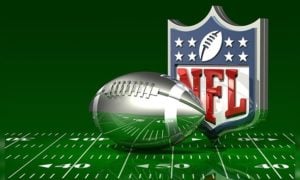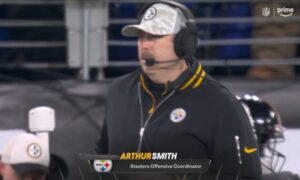By Matthew Marczi
While the Pittsburgh Steelers have their starting lineup along the offensive line set, the truth of the matter is that they have said goodbye to a lot of pieces that have been part of the core of that unit over the years—namely Max Starks, Willie Colon, and Doug Legursky.
Irrespective of their own past performances, the fact of the matter is that the Steelers will be dependent upon a lot of new faces among their reserves, and a lot of these candidates do not even have any in-game experience, like Joe Long, Justin Cheadle, Mike Farrell, Mike Golic, Jr., and Nik Embernate.
Because so many of these candidates have no experience, it is difficult to determine just what they have to work with. In fact, if you include interior lineman John Malecki, who played half of a game in the 2012 season finale, only three of these reserve candidates have any first-hand experience, the other two being of course Kelvin Beachum and Guy Whimper.
So what do the numbers look like for the few players that actually have in-game experience? Remember, of course, that Malecki had only one half-game of playing time, Beachum was a rookie, and Whimper’s numbers are from playing in a different offense, in a different system, on a different team.
Let’s start with Beachum, who by all accounts would appear to be the sixth man and the first one off the bench for just about any injury along the line. Beachum has spent a lot of time trying to master the center position this offseason. Also, when Mike Adams was stabbed, Beachum received the snaps at right tackle this spring, where he started the final five games of the regular season as a rookie.
How did he do? In the seven games in which he played, he accumulated 314 snaps. That broke down into 109 running plays and 205 passing plays, so the offense was clearly geared toward the passing game by almost a two-to-one ratio while he was playing.
However, in 195 non-penalty passing snaps, he allowed pressure on the quarterback 18 times, or on just over 9% of all pass protection snaps. But only five of them registered a hit on the quarterback, and just two of them were sacks. Because Pro Football Focus weighs hits and pressures less than sacks, for obvious reasons, Beachum had a pass blocking efficiency rating of 92.8.
In comparison, Starks—who played every snap of the season—had a pass blocking efficiency of 93.4. Adams, in allowing seven sacks, had a pass blocking efficiency of 92.4. Marcus Gilbert, however, had a pass blocking efficiency of 96.2. If he had played 25% of the team’s pass blocking snaps, that would have qualified him for 13th best in the league. Only the top six tackles rated 97 or above.
Overall, Beachum came out with a -0.4 score for pass protection. However, he struggled mightily against the Dallas Cowboys and Cincinnati Bengals in run blocking. In those two games, he had a run blocking score of -2.3 combined. In the rest of his games, he rated out at 1.1. In addition, his two penalties on the year came in the two weeks that he was thrust in the lineup due to injuries. In his five starts, he was penalty-free, which was a noted improvement from the preseason.
Contrary to Beachum, there is not much to say about Malecki. After David DeCastro left the season finale with an injury, Malecki finished up the last 31 snaps of the game. His pass protection was fine, allowing no pressure on 15 snaps. On the other hand, his 16 run blocking snaps were quite poor, scoring -2.9 for his efforts in about half a game.
Guy Whimper is another matter altogether. Last season, in 197 pass blocking snaps, he allowed 26 pressures with five sacks for a pass blocking efficiency rating of 89.5—70th best out of the 72 tackles league-wide that played at least 25% of the team’s pass blocking snaps.
Just for comparison’s sake, Jonathan Scott played 175 passing snaps for the Chicago Bears last season. He allowed 20 pressures, but one sack, for a pass blocking efficiency rating of 91.3.
Whimper’s run blocking was also lacking. He rated out at -4.4 in that department. On the other hand, after starting all of 2011, he actually rated positively, with a sore of 4.5 in run blocking. Of course, his 14 sacks, 27 hurries, and seven hits on the quarterback allowed made for a pass blocking efficiency of 91.6—which was still, amazingly, better than his performance last year.
These are some of the main candidates for the reserve spots along the offensive line in 2013. Next time, we will look at the numbers for the team’s backups in the past to see how they compare to what they have heading into this season.







